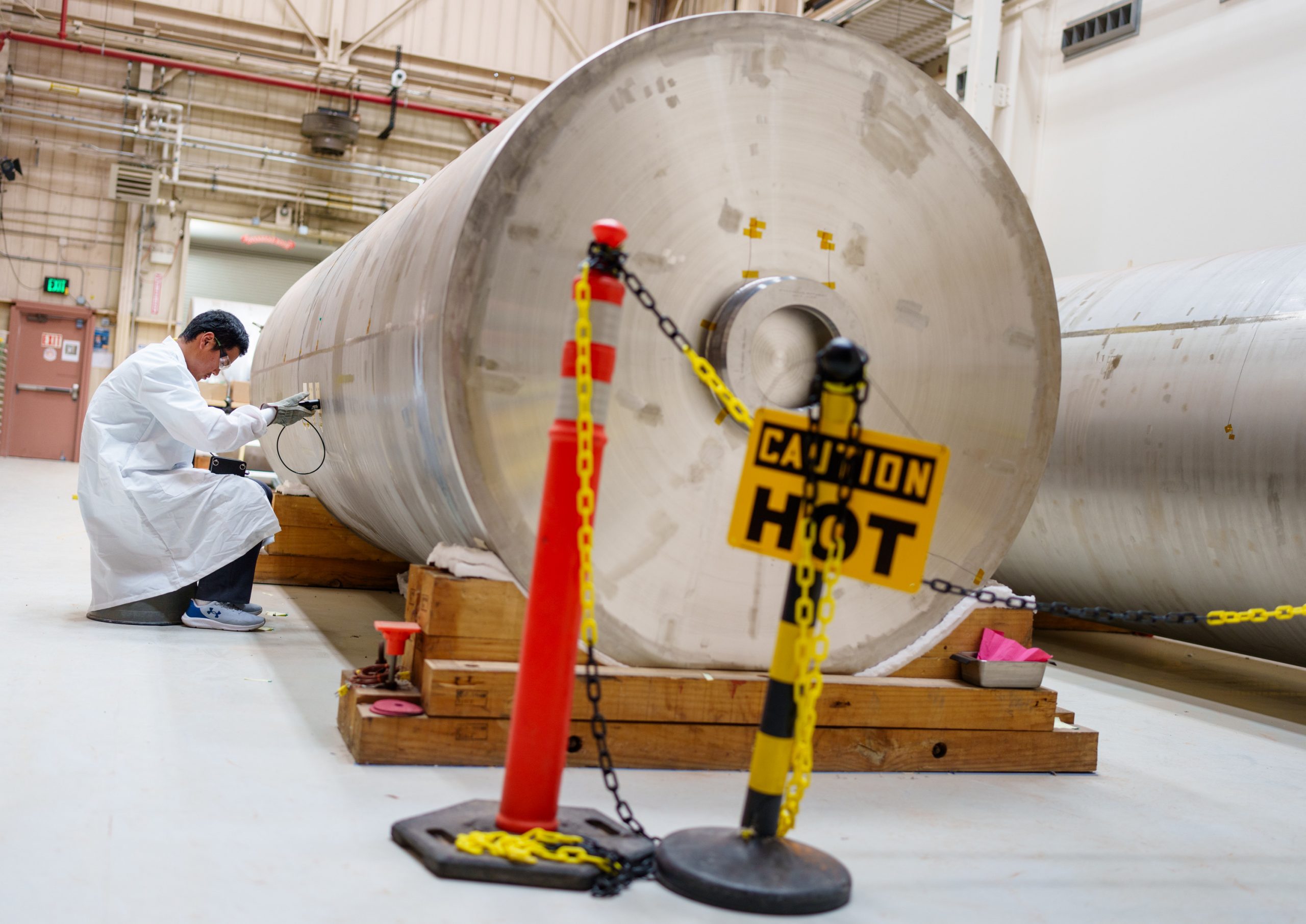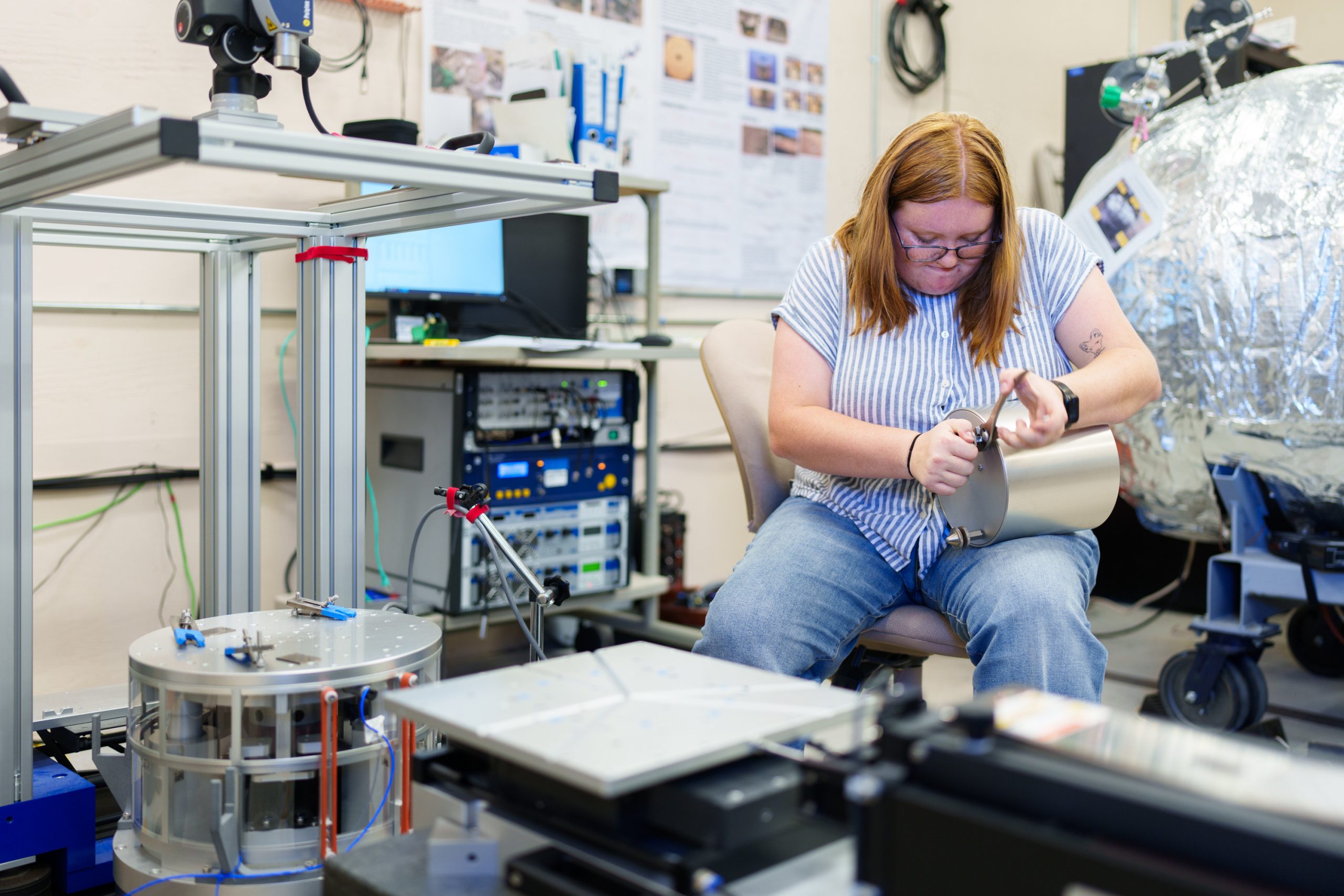ALBUQUERQUE, N.M. — Summer at Sandia National Laboratories typically means high temperatures, blazing sunlight and campuses filled with bright, eager interns.

About 75 of these young innovators have come to Sandia this summer as part of the Future of Research for Climate, Earth and Energy Intern Institute. Another 75 interns participate remotely. The FORCEE institute provides undergraduate and graduate students with real-world experience in conducting research on topics in earth sciences, climate change, decarbonization and infrastructure modernization. The students receive mentorship, attend facility tours and seminars, and can take part in an end-of-summer symposium to present their findings.
“I have a real passion for interns; I think they are the future of this laboratory,” said Kyle Jones, outgoing co-manager champion of the institute. “One of the institute’s goals is to attract new talent to the Labs. I look at interns as team members doing real research. I want an intern program to foster a mentality that makes them feel like they are making a difference.”
The program started in 2021 as the brainchild of Jones, the manager of a geophysics department, with a small geoscience intern program. In the summer of 2022, FORCEE became a full intern institute with a broader mandate. Jones will step aside at the end of the fiscal year to let new leadership, namely Tom Lowry and Michelle Vaugh, with Ray Byrne continuing to serve as co-manager champion, continue to grow the program.
Last summer, 150 interns came to Sandia through the FORCEE Institute. Most of them, 62%, came from Minority Serving Institutions, including tribal colleges and colleges in Puerto Rico. The interns were equally split between undergraduate and graduate students, with one Coast Guard Academy student and three clerical interns. As of May 2024, 29 former FORCEE interns became Sandia employees: 28 were hired as staff members and one as a postdoctoral researcher.
Meaningful work and mentoring
Each FORCEE summer intern works under the guidance of a Sandia researcher on projects in climate change, geosciences and energy research.

“An intern is more than capable of doing meaningful work: researching, producing, data processing, whatever the case may be,” Jones said. “By handing off these tasks to the students, it frees the mentors to tackle more challenging aspects of the work. It’s a real symbiotic relationship.”
One intern, Gordon North Piegan III, began the summer of 2022 with Rachid Darbali-Zamora, a Sandia electrical engineer. Using his background in control systems, Piegan accurately modeled a wind turbine-generator system and validated it against field data as part of the Wind Hybrid Integration Platform project, according to Darbali-Zamora.
Darbali-Zamora was impressed with Piegan’s results and recommended that he submit them as a conference paper — Piegan’s first. Darbali-Zamora guided Piegan through the process of writing the research paper, and when it was accepted, through creating and practicing a presentation.
“In addition to the great technical work and contributions Gordon or any FORCEE intern brings to the table, there’s also the satisfaction of seeing someone grow,” Darbali-Zamora said. “For me, mentoring and helping others grow in their career and personal life is the most gratifying part of this job. I’ve learned something different from every intern that I’ve had.”
Piegan went on to become a year-round FORCEE intern, and his wind turbine modeling project became the focus of his master’s thesis at Montana State University.
Jones added that the FORCEE internship program fosters partnerships with professors and universities. Darbali-Zamora now has a collaboration with Piegan’s Ph.D. adviser at George Mason University as an example.
Enlightening tours and building community
In addition to meaningful research, FORCEE interns are introduced to the broader Sandia mission through facility tours, seminars and community-building events like lunches, Jones said.
In past summers, FORCEE interns have toured various Sandia facilities, including the Center for Integrated Nanotechnologies, the National Security Technologies Gallery, Battery Abuse Testing Lab, and Z Machine, among others.
Melissa Louie, now a Sandia chemical engineer, participated in the FORCEE program while a chemical engineering master’s student at Cornell University in the summer of 2022. During the internship, she worked with Evan Sproul and Brandon Ennis on optimizing carbon fibers for wind turbine blade caps.
“It was super inspiring to see everything everyone was working on, especially in the renewables space,” Louie said. “When we went on tours of the Solar Tower and saw the wind turbine blades in Building 6585, it was really cool to see that everyone was excited about their work.”
Louie now gives back to the FORCEE program by providing on-site support for the summer 2024 interns, just as she did for the summer 2023 interns. Her role includes coordinating weekly informal lunches, facilitating connections among the interns, which she considers one of the program’s most valuable aspects, and serving as a point of contact for things they may hesitate to raise to their mentors.
The FORCEE institute also offers seminars and talks for the interns to attend. One popular seminar focuses on grid modernization and the future of energy storage, Jones said.
“The Analytics for Climate and Earth Sciences community of practice gave a panel on their work and career paths; that was very impactful,” Louie said.
Darbali-Zamora agrees on the importance of these talks and tours.
“These tours and talks demonstrate that we care and want them to learn,” Darbali-Zamora said. “I believe the best product that comes out of the national labs is the people we train, specifically the interns. The technical work we do here is of national security importance, but I encourage every staff member to mentor an intern. There’s a lot you can learn about yourself when you are involved in mentoring.”